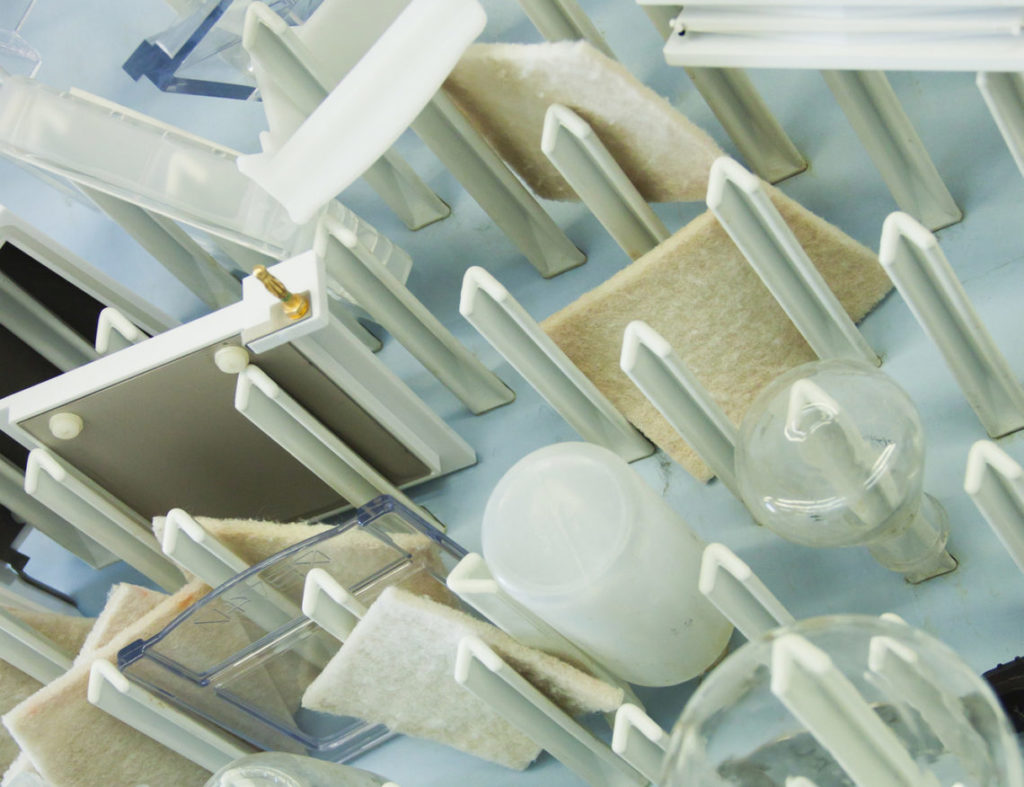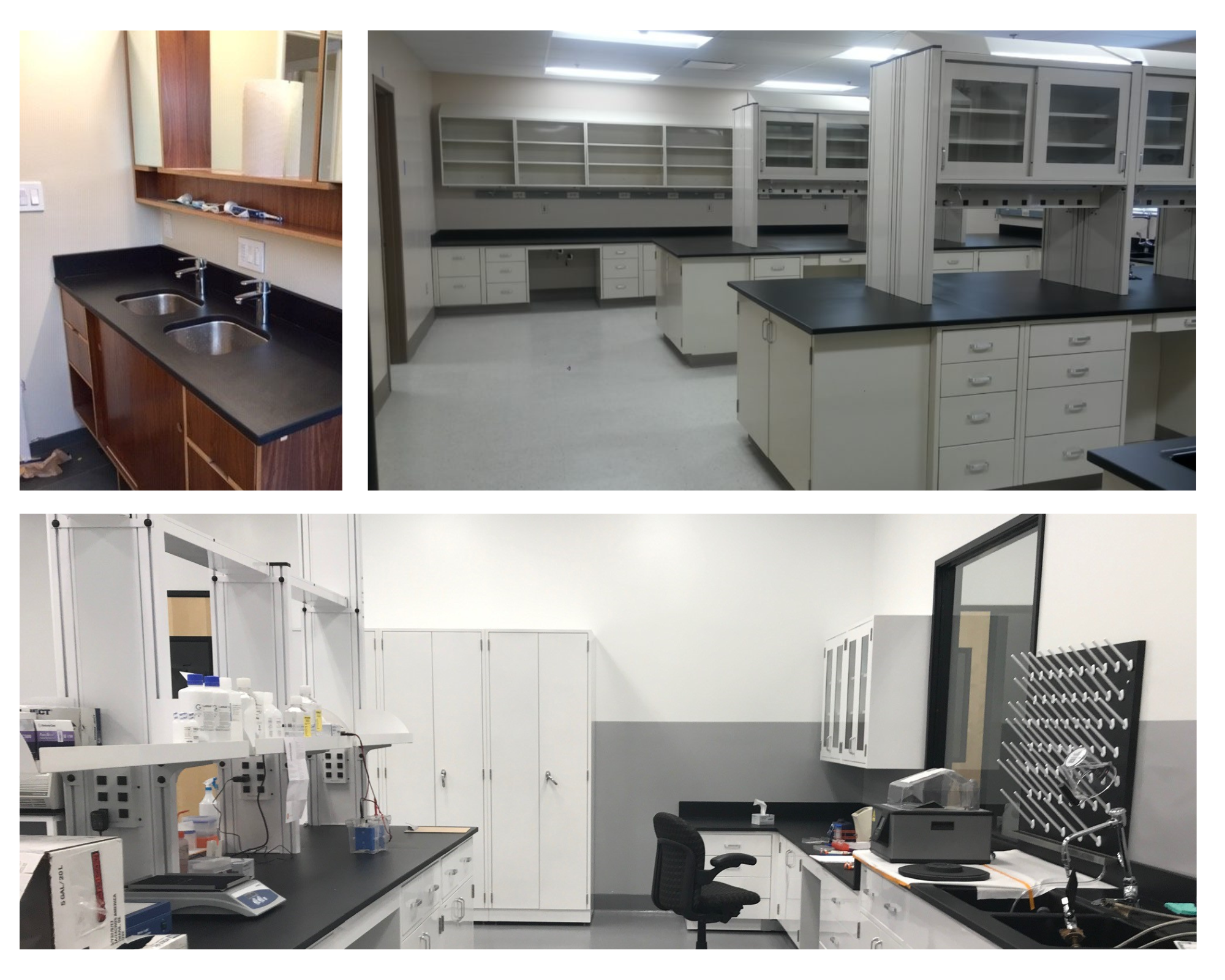If you’ve spent any amount of time working in a laboratory, or even if you’re just well-acquainted with laboratory facts, chances are good that you have your own ideas about how you would prefer to rearrange lab islands, workstations, drying racks, and more. But if you’ve been gifted with the incredible opportunity of designing your own laboratory, you may soon find that the sheer array of choices is daunting. Below are a few tips to consider when designing your laboratory.
Map Out Space or if Your Lab Needs Renovations.
There are two main situations where you may need to design a laboratory. One is if your institution is undergoing laboratory renovations, and the other is when you have the opportunity to design a new lab from scratch. Regardless of your situation, it is vitally important that you first consider health and safety. This comes in the form of ensuring that fume hoods and other methods of ventilation are properly placed, and that other safety features, like emergency eye-wash stations, are included.
Considering the placement of these features is also a must. For instance, be sure that there is a clear, short path to the eye-wash station to minimize the risk of serious injury should you, a coworker, or employee need to use it.
Determine if You Need to Hire Staff or Find a Partner.
Depending on your level of experience in lab design, you may find it helpful to hire planners, installers, and other personnel. Alternatively, you may prefer to develop a collaborative relationship with a lab partner. A lab partner can be especially useful, and you and the partner can then share experiences and opinions to plan out your ideal work space. If you decide you need another knowledgeable person to assist you, laboratory staffing agencies may be able to help you find the ideal planner and/or installer.
Because there isn’t a whole lot of guidance available for the scientist planning a laboratory, it may be helpful for you and any co-planners to consult some of the available literature on common principles of lab planning.
Try and Get a Second Opinion About Your Choices.
Designing your own laboratory space can be a thrilling experience, but since your design choices will be more or less permanent, it is vital to carefully evaluate (and reevaluate!) them. If at all possible, finding a scientist in a similar field to review your choices and give feedback may be helpful. As with many creative projects, it’s easy to get so wrapped up in planning that you forget a couple key laboratory facts or miss a detail or two. Finding a second opinion can dramatically reduce the risk of ending up with a decision or two that you regret. Of course, if you choose to find a laboratory partner, he or she would then be able to offer advice and opinions every step of the way.
Figure Out Your Budget and the Estimated Cost of Your Laboratory
This is a crucial step, and in order to save planning time, it’s advisable to do it sooner rather than later. Considering your new laboratory cost and budget first will help ensure that you don’t waste time and energy looking at lab equipment that is out of your financial reach.
Considering your new laboratory cost and budget first will help ensure that you don’t waste time and energy looking at lab equipment that is out of your financial reach.
Giving yourself a set budget (or being sure that you know the laboratory cost budget set by your institution) will help streamline your planning and get the lab of your dreams more quickly.
In short, designing your own work space during laboratory renovations or construction can be both rewarding and daunting. But if you seek help from reputable laboratory staffing agencies and fellow scientists, or even from a laboratory partner, you’ll be well on your way to having your ideal work space.
Frequently Asked Questions
What are the features of a well-designed laboratory?
A well-designed laboratory typically includes efficient workflow patterns, adequate space for equipment and personnel, proper ventilation, appropriate storage solutions, ergonomic design for user comfort, and adherence to safety regulations.
What are three important factors to consider when choosing a reliable laboratory?
Three important factors to consider when choosing a reliable laboratory are accreditation and certification, expertise and qualifications of the staff, and the availability and quality of equipment and facilities, such as electricity and plumbing systems.
Why is good laboratory design important?
Good laboratory design is important because it enhances safety, efficiency, and productivity in the lab. It promotes optimal workflow, minimizes hazards, allows for proper equipment placement, and creates a conducive environment for scientific research and experimentation.
What are the objectives of laboratory design?
The objectives of laboratory design include creating a functional and safe workspace, optimizing workflow and efficiency, facilitating collaboration and communication, ensuring proper equipment integration, providing adequate storage and organization solutions, and adhering to regulatory requirements.
How do you create a safe and productive lab environment?
Creating a safe and productive lab environment involves implementing proper safety protocols and training, ensuring regular equipment maintenance, providing sufficient ventilation and hazard control measures, promoting good communication among lab members, and fostering a culture of safety and responsibility.
What are the top 3 most important apparatus in the laboratory?
The top three most important apparatus in the laboratory can vary depending on the field of research, but commonly include analytical instruments (such as spectrophotometers or microscopes), safety equipment (such as fume hoods or safety cabinets), and laboratory island accessories or tools.


